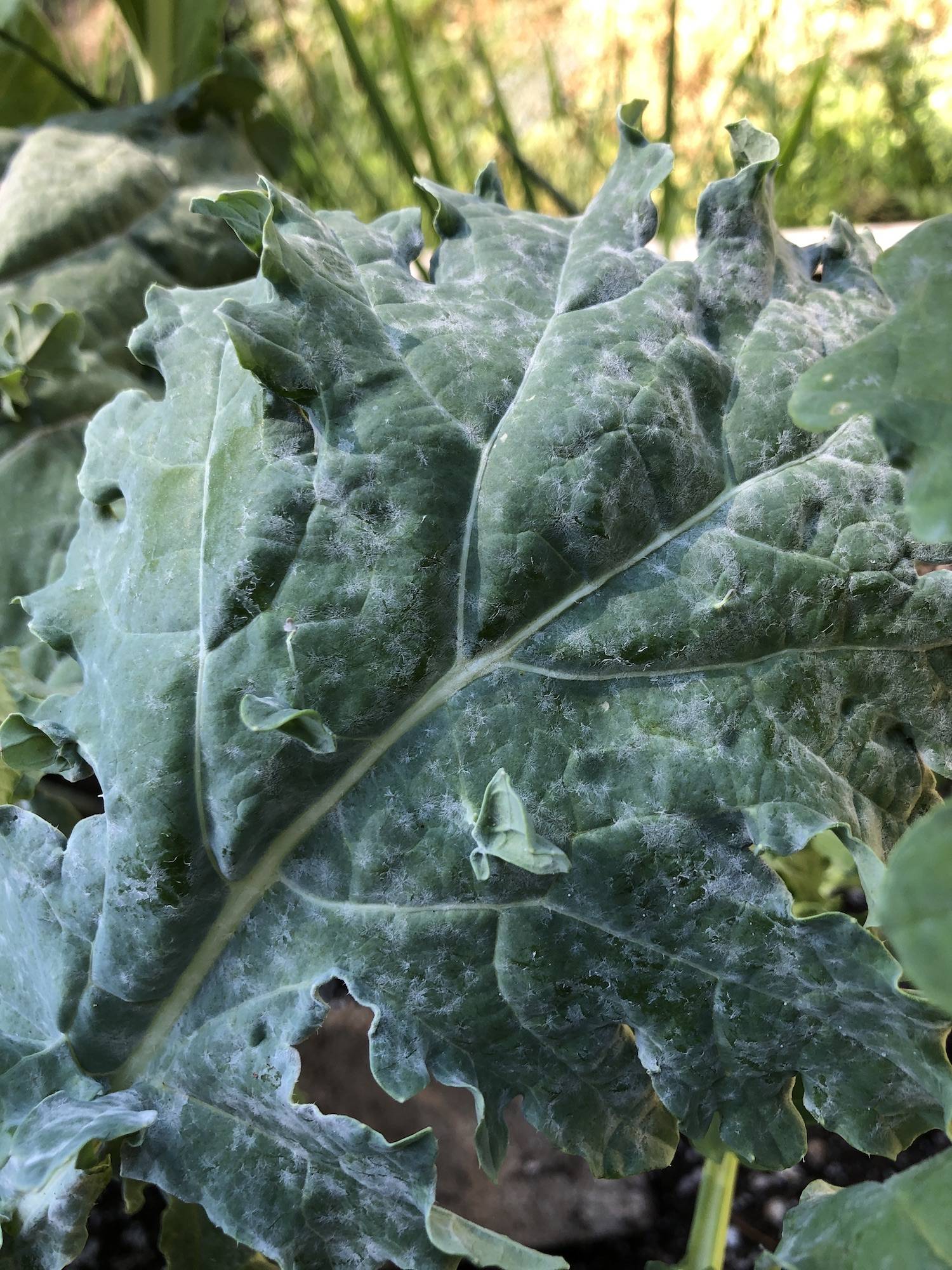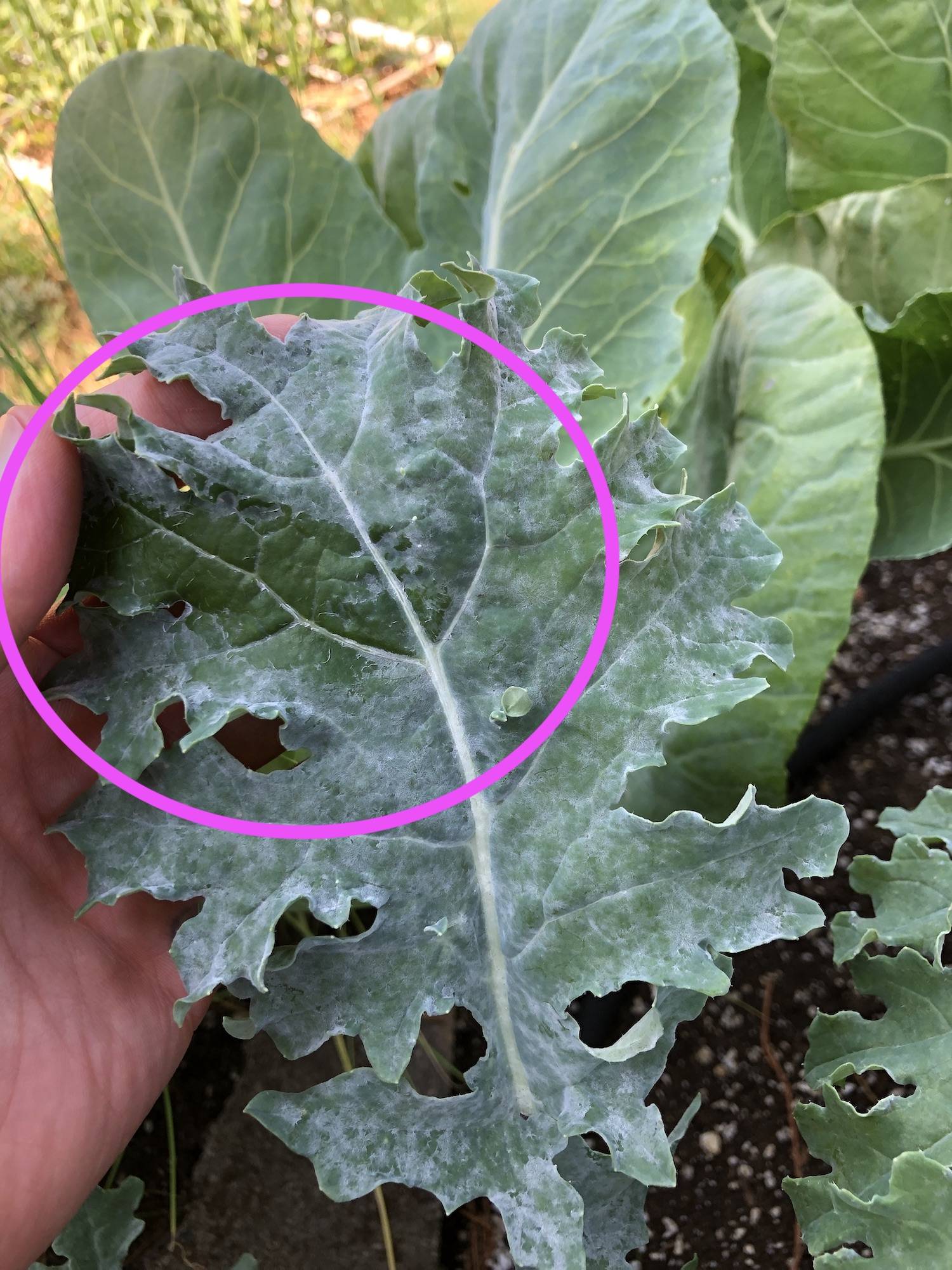I think I'm dealing with powdery mildew, but I want to confirm that diagnosis.
Context: I'm in Portland, OR. I've got several raised beds with a couple kinds of kale, broccoli, brussels sprouts, some beans, cucumbers, and few other things. The soil is a combination of high quality store-bought and my own home-cooked compost. I'm not using any chemical pesticides. Only OMRI products and Cornell spray, etc. I'm struggling with aphids on many of the brassicas these days. I'm keeping them under control, but it's a daily struggle. Meanwhile...
My Russian kale started looking unhappy. The main symptom is a white, dusty, hazy complexion.



If I rub with my finger, the white haze wipes off to reveal a shinier, greener leaf surface.

In addition to this symptom, I also see brown splotches along the stems. Usually worse on the outermost leaves.


Interestingly, it only seems to be effecting the Russian kale. I am also growing Portuguese kale in the same beds, and they look pretty darn happy...
 I do see a slightly different kind of brownish flecks along these stems of the Portuguese kale, but I don't know this variety well enough to know whether that's normal. The leaves seem totally fine.
I do see a slightly different kind of brownish flecks along these stems of the Portuguese kale, but I don't know this variety well enough to know whether that's normal. The leaves seem totally fine.
I think I'm dealing with powdery mildew. So I sprayed the leaves with Cornell formula (mostly water + a little baking soda). After a short amount of time, I do see a change. The dusty white is gone and the leaves look greener and healthier.
 The before/after effect is a bit exaggerated in these photos because the light was different when I took the photos.
The before/after effect is a bit exaggerated in these photos because the light was different when I took the photos.
In some cases, the treated leaves look sort of brown. It's usually more pronounced underneath and the texture feels a bit "crispy".


What are your thoughts? Is this powdery mildew? Am I handling this correctly?
